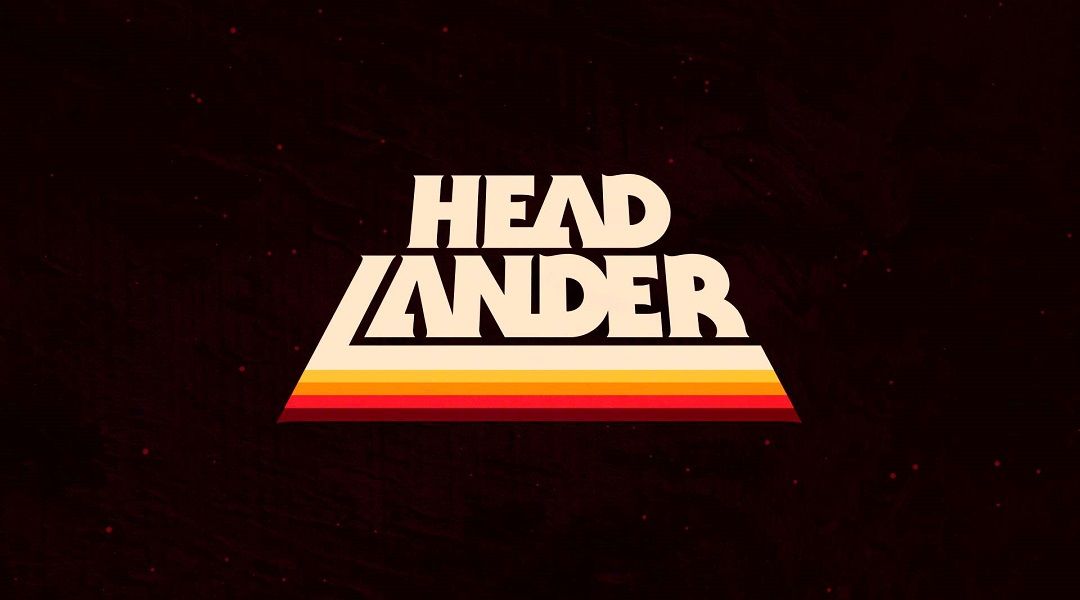Headlander from Double Fine Productions is a fun, quirky science-fiction Metroidvania game with engaging puzzles, strong exploration elements, and flying heads.
In recent years, the franchises that gave the "Metroidvania" sub-genre its namesake have not been treated very well. For example, the last Castlevania "game" Konami made was a pachinko machine, and Nintendo has decided to make a co-op FPS Metroid instead of a more traditional game in the series. In light of this, other developers have stepped up to fill the void, with Double Fine Productions throwing its hat in the ring with Headlander.
Published by Adult Swim Games, Headlander is set in the far future, as imagined by 1970's sci-fi TV shows and movies, with a distinct visual style described as "retro-futuristic." In this twisted future, robots rule the universe, with the player controlling someone who is said to be the last human left alive. However, all that remains of the last living human is his head, which is housed in a rocket-propelled helmet.
Thanks to this nifty helmet, players are free to zip around the environment as a severed head, dodging enemy laser beams and other hazards. The head can attach itself to inanimate objects and robots to take control of them, which is what the majority of Headlander's puzzles are based around. This clever mechanic evolves over the course of the game, and as a result, Headlander's puzzles are consistently challenging and engaging.
Puzzle solving is a bigger focus in Headlander than it is in most other Metroidvania games, but that doesn't mean the game skimps on other important elements of the genre, like exploration, for example. For the most part, exploring Headlander's sterile space stations is a rewarding experience that tasks players with utilizing their abilities in creative ways to reach new areas. On the downside, the game's mini-map is perhaps a little too revealing, making it easy to find most of the game's secrets without even trying.
Puzzle solving and exploration are both implemented well in Headlander, but the game stumbles when it comes to combat. Headlander wants players to go for precision hits and execute complicated trick shots by ricocheting lasers off walls, but simply spamming the attack button is usually more effective. A halfhearted cover system is in place to try to add depth to the simplistic combat, but utilizing it only serves to needlessly prolong encounters.
Even if one ignores the cover system, it's still fairly difficult to die in Headlander. When robot bodies are destroyed, it usually only takes a couple of seconds to zoom to another, which robs many combat sections in the game of their tension. In other words, Headlander's unique gameplay mechanic of moving from one body to the next makes the combat too easy, and the shooting itself favors spamming over strategy.
For these reasons, Headlander's combat is its weakest component, but it's not all bad. There are some sections in the game where players are actually rewarded for being strategic with their shots, mainly in areas where puzzles and fighting are combined. The game's rare boss fights demand smarter tactics as well, making them a highlight of the adventure.
In the game's later stages, battles can become outright hectic, and the result is laser beams bouncing all over the place in what looks like a blinding neon fireworks show. This gives the gunfights much needed flair, but sometimes when there's too many laser beams and enemies onscreen at once, the game suffers from significant slowdown.
Luckily, the slowdown issue only pertains to the busiest combat sections in the game, with the rest of it running smoothly. Throughout our time with it, there weren't many other major graphical or technical issues found, so players know if they purchase Headlander, they're at least getting a well-made product that mostly functions as intended.
Even though it's hard to deny that Headlander is a well-made video game from a technical standpoint, there are some that may be hesitant to pick it up due to its short length. It's possible to complete Headlander with a 100% statistic in one day, and that includes fully leveling the player character and discovering all of the game's secrets. Double Fine attempted to add replayability to Headlander with optional side quests players can partake in, but like the game's boss fights, these side quests are unfortunately few and far between.
Even though Headlander may be lacking in terms of quantity, the content it does have is quality. As far as Metroidvania games go, it's one of the betters ones, utilizing its unique premise for some effective dark humor and interesting gameplay mechanics. It's safe to say that both fans of the genre and fans of Double Fine's distinct style will enjoy Headlander, and it should serve to keep disgruntled Castlevania and Metroid fans satisfied for the time being.
Trailer
[HTML1]
Headlander is available now for PC and PlayStation 4. Game Rant was provided a PS4 code for this review.

